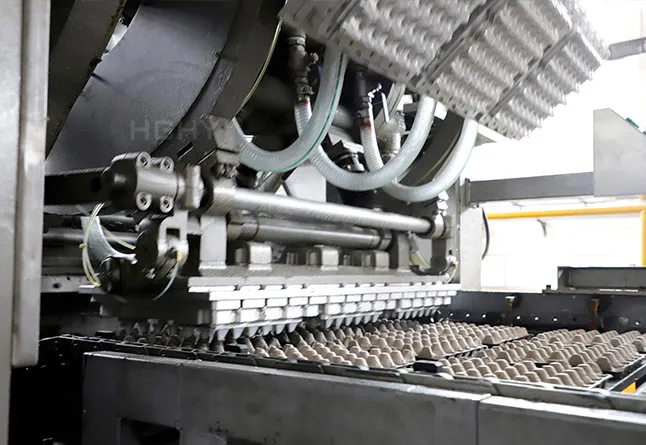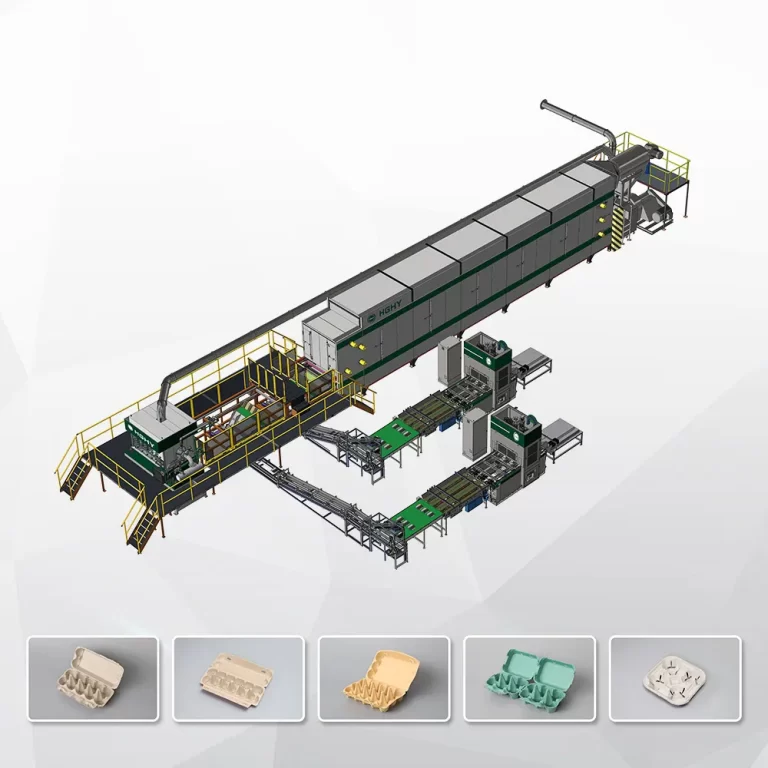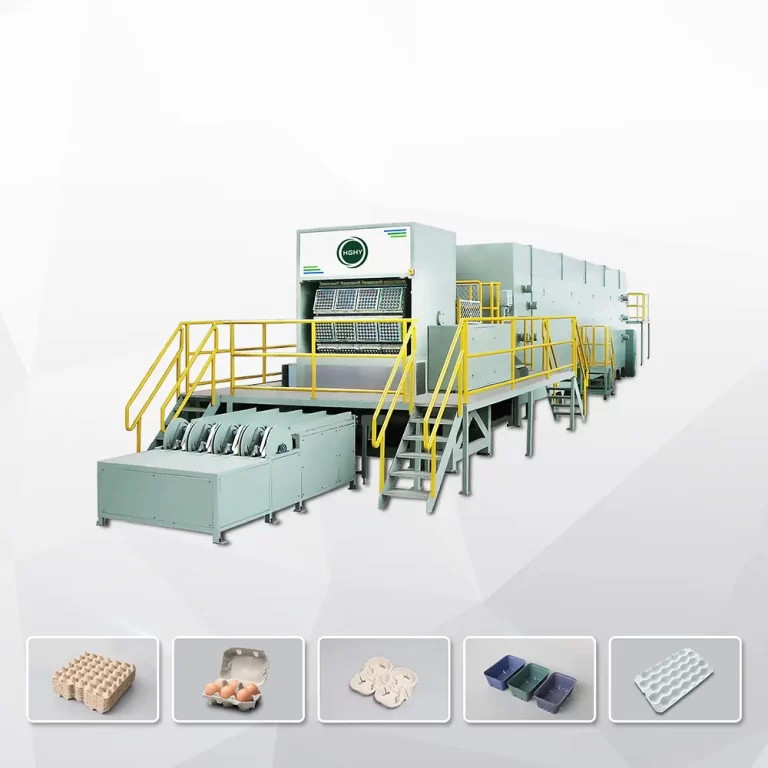A Complete Guide to Its Core Principles and Advantages
In the modern eco-packaging industry, egg tray machines have become essential for transforming waste paper pulp into environmentally friendly packaging products such as egg trays, boxes, and cartons. Among the various technologies in this field, Double Rotary technology—also known as counter-rotating roller forming—has gained attention for its efficiency, precision, and sustainability.
So, what exactly is Double Rotary technology in egg tray machines, and why is it considered a game-changer? Let’s break it down.

1. What Is Double Rotary Technology?
Double Rotary technology in egg tray machines involves two synchronized rollers with engraved molds rotating in opposite directions. The paper pulp is fed between these rollers and pressed into shape as it passes through them. This is a continuous forming method that replaces the traditional vacuum suction molding process.
Instead of using vacuum molds to suck pulp into shape one mold at a time, the Double Rotary system enables constant high-speed production, ideal for large-scale operations.
2. How Does It Work?
Here’s a step-by-step breakdown of how the roll-to-roll egg tray forming process works:
- Pulp Preparation
Waste paper (newspapers, cartons, books) is processed into a uniform slurry through pulping and refining. - Pulp Feeding System
The pulp is delivered to the forming unit in controlled amounts and spread evenly between the rollers. - Dual-Roller Compression Forming
As the two rollers rotate toward each other, the pulp is compressed between their surface molds, shaping it into trays. - Product Release & Transfer
The formed trays are automatically detached from the molds and transferred to a drying line for further processing.
3. Key Advantages of Double Rotary Technology
1. High Productivity for Mass Production
Double Rotary technology allows for continuous forming, increasing output by 30% to 50% compared to traditional vacuum forming.
2. High Precision & Product Consistency
The molds engraved on the rollers provide accurate and repeatable shapes, ensuring uniform thickness and smooth edges on every product.
3. Lower Energy & Material Consumption
Without the need for vacuum suction, the system reduces power consumption. It also makes more efficient use of pulp, minimizing waste.
4. Compact Equipment Footprint
The roller design requires less space than traditional tray machines, making it suitable for facilities with limited room.
5. Flexible Mold Switching
Changing product types is simple—just swap out the roller molds to create different tray sizes and designs.
4. Applications of Double Rotary Technology
This technology is now widely used in the production of:
- Egg trays and cartons
- Industrial packaging trays
- Medical instrument trays
- Cup carriers and bottle holders
- Shoe support inserts and more
For example, a single automatic Double Rotary egg tray machine can produce up to 100,000 trays per day with only 2–3 operators, significantly reducing labor costs while ensuring quality.
It’s also highly compatible with bio-based and biodegradable materials like sugarcane bagasse, bamboo pulp, and recycled fibers—ideal for the growing eco-packaging market.
Conclusion
The double rotary (counter-rotating roller) technology is redefining how molded pulp products like egg trays are made. It offers:
- Better efficiency
- Higher product quality
- Lower production costs
- Greater environmental sustainability
As global demand for eco-friendly packaging increases, this advanced forming method is poised to become the industry standard for pulp molding equipment.
Double rotary forming is not just a technical upgrade—it’s a leap toward smarter, greener, and more scalable pulp packaging production.



